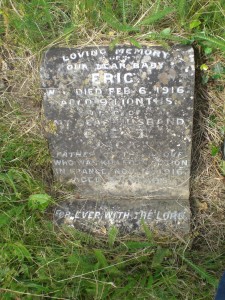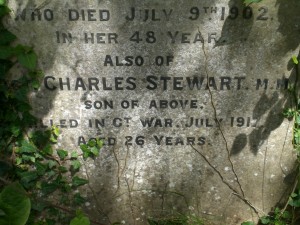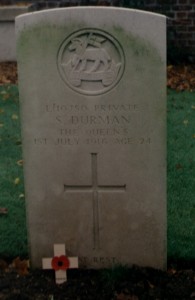George E. Thatcher
Private 18098
1st Royal Berkshire Regiment
Division 40
 |
 |
George Edward Thatcher, known to his friends and family as Jack, was the husband of
Mrs Sarah Thatcher (nee Clarke), of 6, River Road, Reading. He is commemorated on a small scroll stone, on the grave of one of his children, number 10263. Only the initials G.E.T. and Jack are written on the headstone but a CWGC search revealed his full name and details. The 1911 census indicates that he was a tin solderer at the tin works and he had three children – Lily, Cyril and Evelyn. Sharing their five room family home were his sister in law and three brothers in law.
George enlisted on 25 March 1915, serving first in the 3rd Battalion Royal Berkshire Regiment before moving to the 1st Battalion. He arrived in France in December 1915. He was killed in action on the 14 November 1916, when the battalion were involved in the later stages of the Somme battle. He was killed taking a trench. Jack Thatcher is buried in Munich Trench British Cemetery, Beaumon Hamel, location C 31. The cemetery contains many men who were killed in the same action and Jack lies near Fred Gray who is also commemorated in the Reading Cemetery and who died on the same day.
George Thatcher was 37 when he was killed. The Chronicle of 8th December 1916 records that Jack was “killed instantly”, that he worked at Huntley, Bourne and Stevens before the war. He left a wife and five children. The author has visited Munich Trench Cemetery which is rather out of the way on Redan Ridge and the visitors book which at the time went back to 1975 revealed that family members visited the grave in1992 and 1997.


